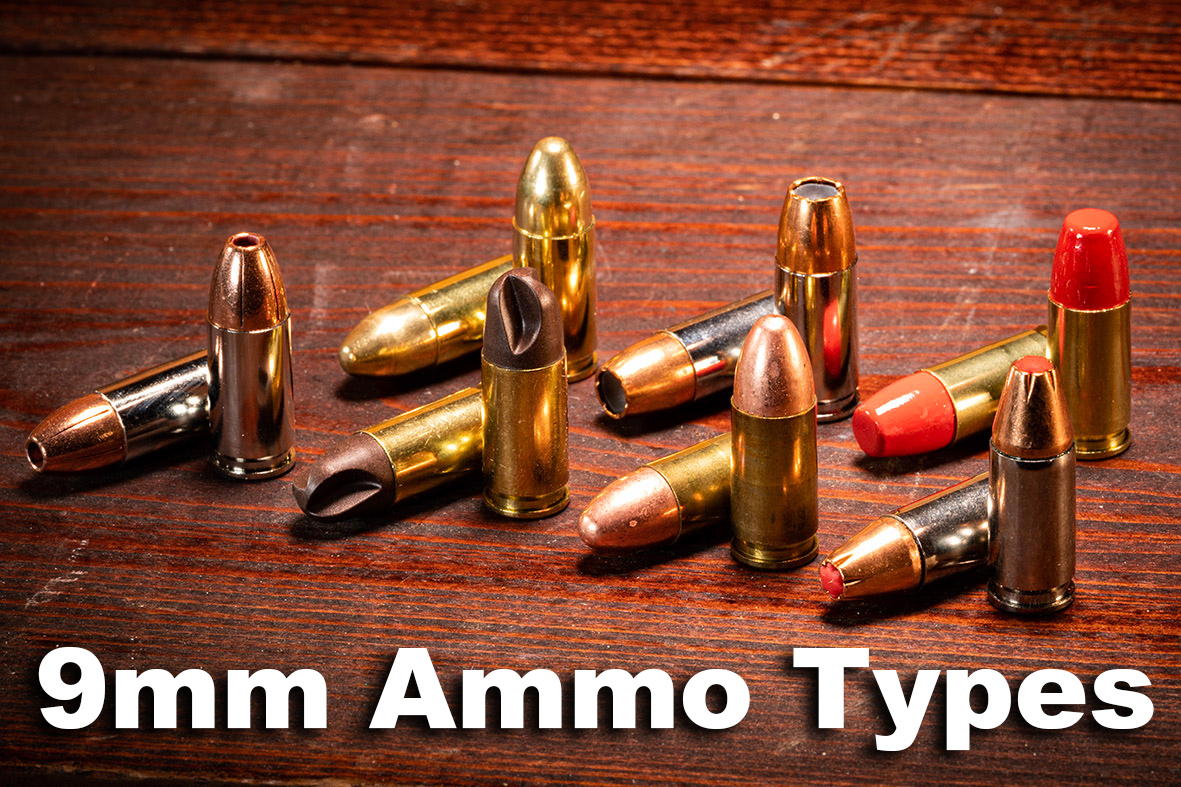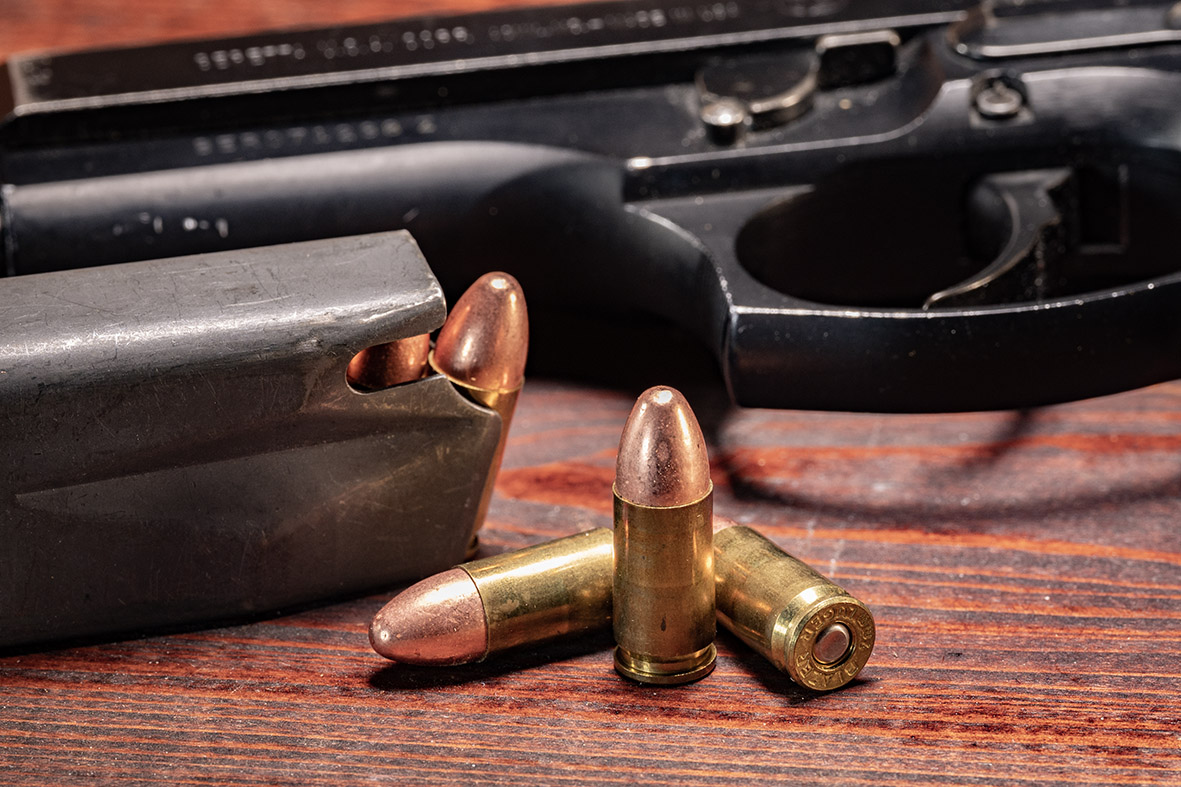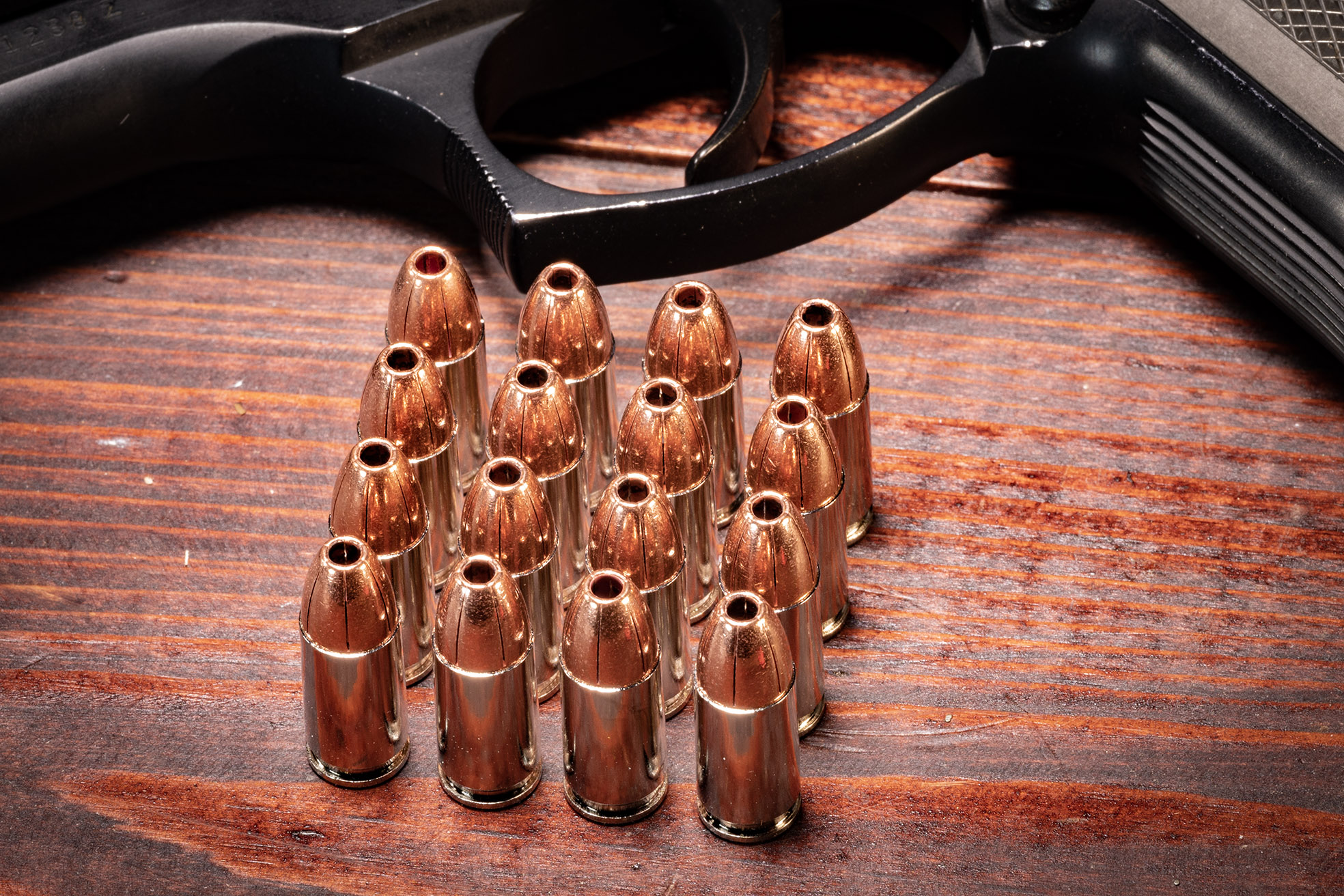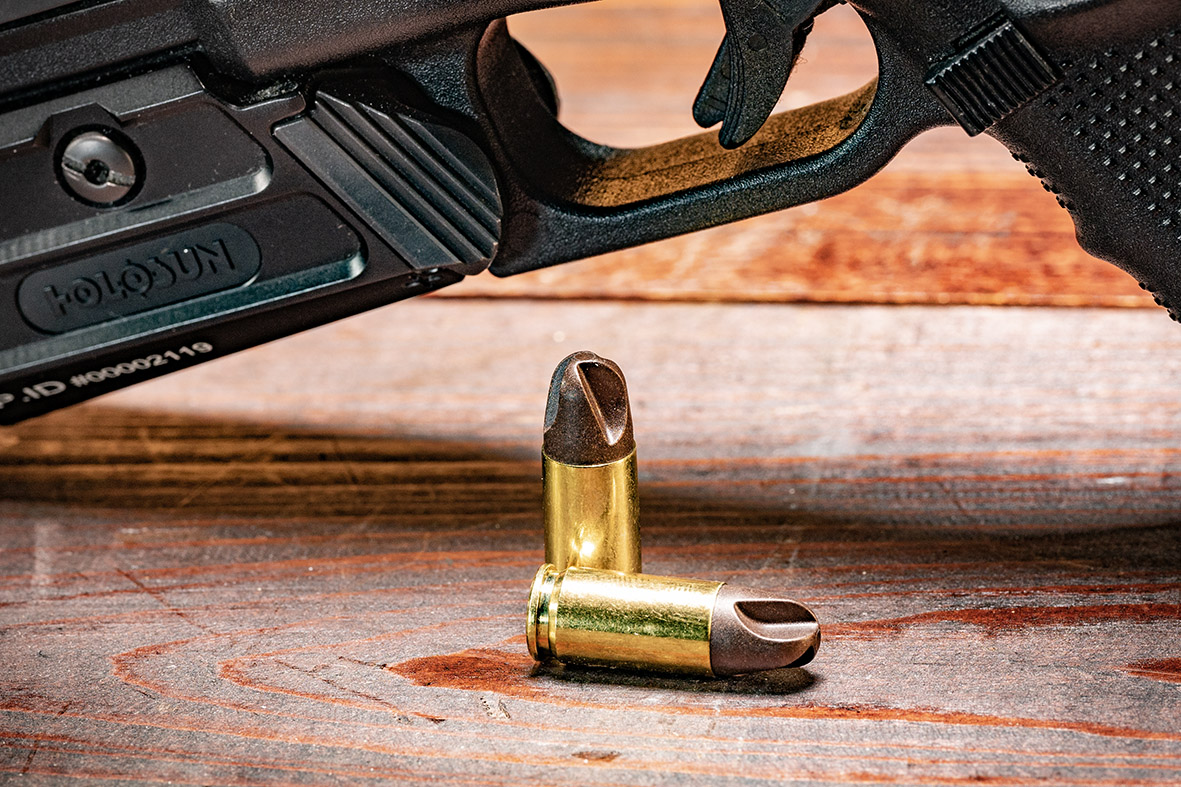A look at your options when it comes to 9mm ammo and what each type of ammo is commonly used for.
The 9mm Luger is one of the most prominent and popular cartridges in the world. For a variety of reasons, it’s likely the most-used centerfire pistol cartridge in the history of firearms.
One of the reasons that the 9mm Luger is so popular is its versatility. This cartridge is not only trusted for self-defense in the home and out in public, it’s also a manageable round that can be comfortably fired over a full afternoon of target shooting. It has reliable power but lacks the forceful recoil of larger cartridges. It can be used for hunting, home protection, conceal-carry, and plinking.
Because the 9mm Luger has so many uses, selecting the right ammo can be tough. If you have recently purchased a 9mm Luger, you should understand the different types of bullets so you can select the perfect option for your specific needs.
Types of 9mm Ammo
The most common types of 9mm ammo available to American civilian shooters include the following:
- FMJ
- TMJ
- JHP (and ballistic tip ammo)
- Solid Copper
- Frangible
Your Guide to the Different Types of 9mm Luger Ammo
Full Metal Jacket (FMJ)
Probably the most prominent type of ammo for the most prominent cartridge, 9mm Luger full metal jacket rounds have a lead core wrapped with a copper jacket on all sides except the rear. The lead forms the core of the bullet, while the copper jacket creates less fouling in the barrel and smoother cycling between one round to another. Unlike many other types, they do not expand when striking a target.
Full metal jacket 9mm bullets are usually rounded at the front with a traditional dome-shaped profile. The lead, however, is exposed at the rear. The “full” jacket, in other words, does not reach around the entire bullet.
However, this type of ammo also includes enclosed base or “encapsulated” rounds, which have a separate disc (brass in most cases) that reduces lead exposure.
FMJ rounds can also include flat-nose bullets, which instead of the rounded tip have a flat plane at the front.
Main Uses for FMJ 9mm Ammo:
- Plinking and target shooting
- Self-defense practice
- Police training
- Military sidearms
These rounds are typically used for target shooting, training, and competition. They are the preferred option for high-volume shooting in non-critical situations, as they have a relatively affordable price and the copper jacket creates less fouling in the barrel.
Total Metal Jacket (TMJ)
TMJ 9mm cartridges are essentially full metal jacket rounds, but the jacket wraps all the way around the bullet, completely encapsulating the lead. With smooth feeding, less fouling, and no expansion, they have all the same functionality as an FMJ round.
The only difference is that they put off virtually no lead vapor. With FMJ rounds (outside of encapsulated), some lead vapor can be released, which is not the case with total metal jacket cartridges.
Main Uses for TMJ 9mm Ammo:
- Indoor training
- Indoor hobby shooting
- Indoor competition
Even with good ventilation and FMJ bullets, indoor shooting ranges can see a buildup of dangerous lead vapor. Therefore, it’s often policy that users fire only total metal jacket rounds. These cartridges are rarely used for self defense, and instead are used at indoor shooting ranges.
Jacketed Hollow Point (JHP)
A jacketed hollow point consists of a lead core with a copper jacket. Instead of wrapping the front of the bullet, the jacket is notched or cut in some way and the bullet has a depression or hole in the front. The point is hollow, which allows for expansion when the bullet strikes a target.
Jacketed hollow points come in many different designs, with different cavities and notches in the bullet. The main feature, however, is the hollow point that allows for expansion when the bullet strikes a target.
Main Uses for JHP 9mm Ammo:
- Self defense
- Hunting
A jacketed hollow point is commonly used for self defense. If you plan on carrying your weapon for personal protection, you will likely load JHP rounds. They create larger, more effective wound channels, but also reduce over penetration, which is a concern with non-expanding JHP ammo.
Ballistic Tip
A ballistic tip is simply a JHP round with some sort of polymer inserted into the bullet’s cavity. Manufacturers have many different types of ballistic tip ammo, but the overall purpose is to enhance performance while allowing for expansion. They also reduce the chances of “clogging,” a situation where clothing stops expansion.
Main Uses for Ballistic-Tip 9mm Ammo:
- Self defense
- Hunting
Although they come with a slightly higher price tag (in most cases), these rounds are preferred by self-defense users and hunters who want additional ballistic potential.
Solid Copper (Usually Hollow Point)
The overall design of these 9mm bullets is fairly simple. Regardless of shape, the bullet is made entirely from copper. Most of the rounds in this category are hollow points, so they have a cavity or hole at the front just like a JHP. They may also be notched to support expansion.
These bullets act in different ways than other rounds. For one, the solid-jacket body all but eliminates the chances of a bullet splitting. This means better “weight retainment” and could result in better penetration. There is also no lead, so the chance of lead vapors is eliminated.
Main Uses for Synthetic-Jacket 9mm Ammo:
- Hunting
- Indoor target shooting
- Indoor competition
- Self defense
Solid copper rounds are often used for personal protection because they expand with almost no chance of separation. However, because of no lead, they can also be used for indoor target shooting and competition. The lead-free bullets may also be preferred by hunters who want to avoid any lead whatsoever.
Frangible Bullets
Frangible rounds are specialty projectiles designed from inception to not penetrate hard surfaces. This is why US Air Marshalls carry the round since puncturing the fuselage is very likely to down an aircraft.
They sacrifice ballistic energy and penetration to achieve this by having the projectile made of a material that will vaporize when it strikes a hard surface. Sometimes, this material is sintered metal; other times, it’s a solid polymer.
These rounds are expensive, and if you don’t have to use them, I wouldn’t recommend them since some firearms struggle to feed them reliably. One thing that they have going for them is incredible muzzle velocity. Since the round is so light, they can often achieve muzzle velocities north of 2,000 fps, which is practically screaming by pistol round standards.
Main Uses for Frangible 9mm Ammo:
- Close-quarters tactical training
- Some indoor self defense
Private owners of 9mm handguns will rarely use frangible ammunition. Traditionally, this type of ammunition is used for close-quarters training by police and military. When the bullet hits a metal target, there is virtually zero chance of the bullet bouncing back and hitting the shooter or another person.
Your 9mm Luger Ammunition is Waiting!
We take pride in having a full selection of 9mm ammunition! Visit our AmmoToGo’s 9mm selection today and place your order for FMJ, hollow point, or solid copper rounds!




